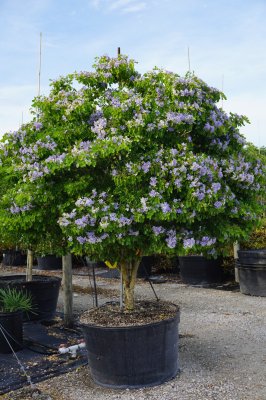Trees, and all plants, have a natural distribution in the world. We refer to a native tree as when it occurs naturally in a particular place. Natural plant distribution may be considered at different levels on the basis of classification: plant family, genus and species. Each level usually ranges from the most extensive to the one with most restrictions. For example, the extraordinarily large and diverse Pea Family, Fabaceae, includes about 700 genera; including trees and shrubs which are spread throughout the subtropical and tropical world.
For example, the thorn trees of the genus Acacia, of the Fabaceae, has over 160 species, and has several restrictions in its natural distribution. It is common in Central and South America, Africa and South Asia. Continuing the progression, the Cinnecord tree (Acacia choriophylla), one of the species TreeWorld has in stock, exhibits a natural range which limits with the Florida Keys, the Bahamas and Cuba.
What Are Native Trees and Their Natural Distribution?
There are advantages and disadvantages of the ornamental cultivation of native trees within their natural area. In the first case, native trees grow well where they have evolved and therefore they adapt perfectly to the climatic conditions, necessary soil mycorrhiza; insect pollinators are present and they provide traditional food sources for local fauna.
Among the disadvantages are that the tree or shrub may be subject to disease or pest attacks from locally-prevalent organisms. Moreover, native trees may be less common in the local nursery trade, be harder to obtain, and hence it limits cultivation information available for their growth.
Gardeners sometimes also have an aversion to cultivating native plants. Mostly because they may be a common feature of the natural landscape and thus not as interesting.
What Are Exotic Trees and Their Natural Distribution?
Exotic trees, those grown in a location where they are not native, have their own pluses and minuses in the garden. First of all, exotic trees are typically of greater interest to the home gardener; this for the simple reason that they are different from the local populations of native trees. As such, they generate greater attention because they may not be familiar to the average tree lover.
Trees and other plants have evolved in a shared environment with their own common pests and diseases. In terms of natural distribution of trees: the introduction to a new location where the environment has a different assemblage of pests and diseases may be an advantage to an exotic plant; as it may grow more vigorously than it does in its native home. However, the opposite result is also possible. A local insect or plant disease may find the exotic tree to be a perfect host and make its cultivation difficult or impossible.
If there is a significant climatic difference between an exotic tree’s native area and its introduced locality; leaf production cycles along with flowering and fruiting seasons may be impacted. For example, fruits may set but never mature. A related problem is that the exotic tree’s natural pollinator organism may be absent and therefore prevent fruit production altogether. In most cases, the problems associated with the ornamental growth of exotic trees are known. It is therefore relatively easy to select particular exotic trees that will do well by themselves or mixed with native trees; to provide a pleasing and attractive home garden.





